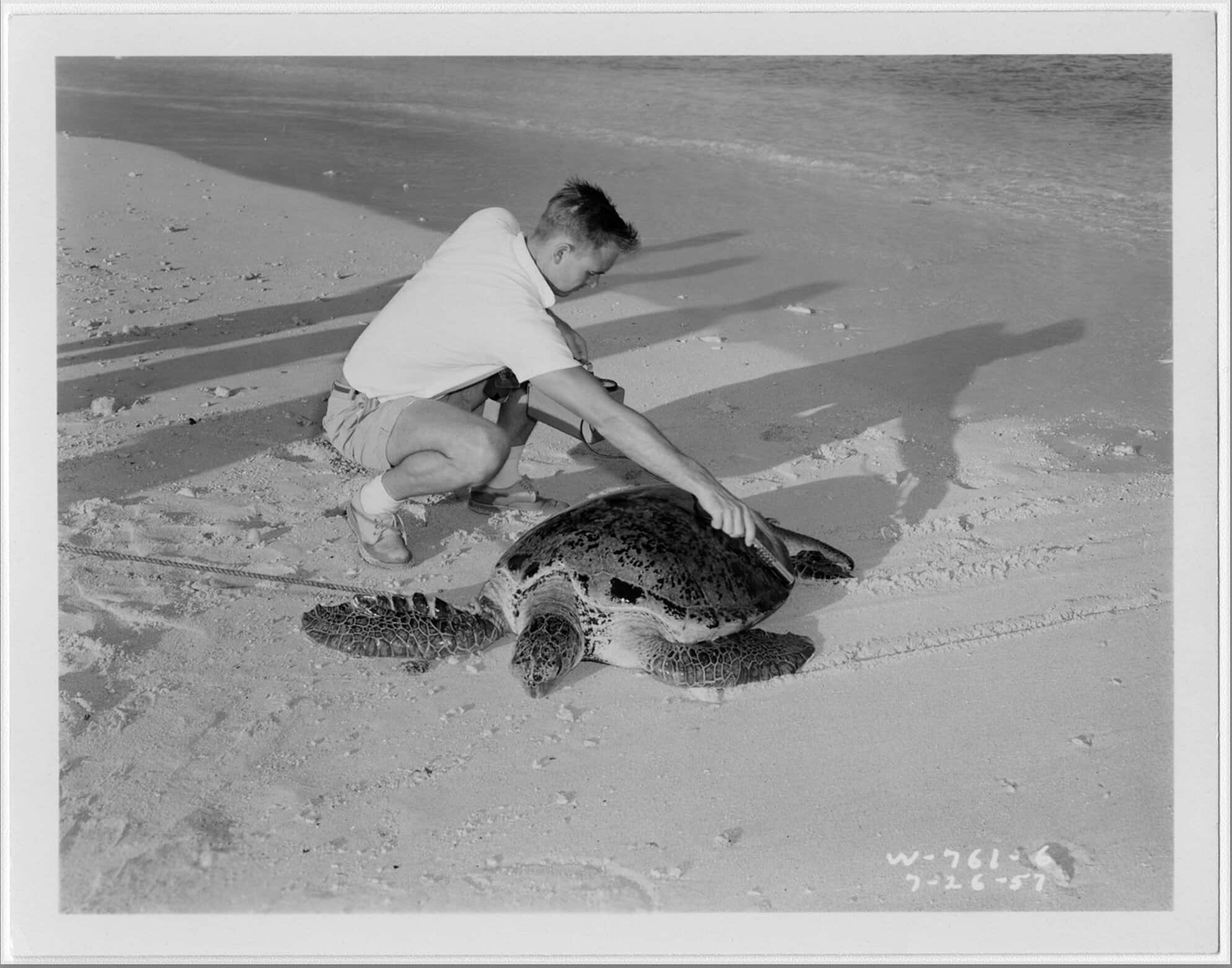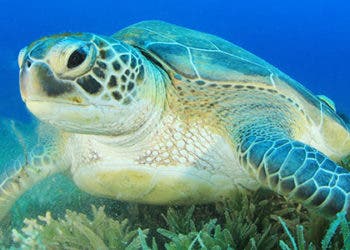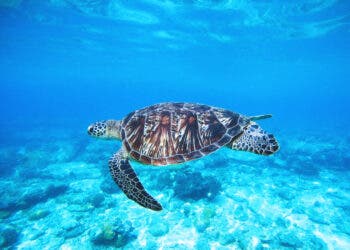Effects from past nuclear activities leave a traceable chemical legacy. Isotopic signals from nuclear tests and attacks make their mark in environments near and far from the detonation locations. Now, researchers have also found these signals in an unexpected place: the shells of turtles, tortoises, and sea turtles. This doesn’t seem to affect the animals, but it could be useful to monitor radioactive elements in nature.

During the Cold War, the US developed a large nuclear weapons complex. This involved multiple sites across all working to produce weapons from natural uranium. Although these weapons were never used in an act of war, they were still tested. When they were tested, they produced nuclear contamination in the environment.
An estimated 30-80 million cubic meters of polluted soil and 1.8-4.7 cubic meters of polluted water were produced during these nuclear tests. Cyler Conrad from the Pacific Northwest National Laboratory wanted to see whether traces of this pollution show up in biological samples. Specifically, Conrad and his team explored the shells of turtles, and tortoises, looking for traces of human-made uranium. They looked at shells from five different specimens in places linked to uranium buildup.
Lo and behold, they found that the shells preserved a timeline of exposure to the atomic materials.
The world’s nuclear history — trapped in tissues
Uranium signatures were found in a green sea turtle from Enewetak Atoll. This atoll lies in the Republic of the Marshall Islands, deep in the Pacific Ocean. A desert tortoise from southwestern Utah close to the Nevada National Security Site, also exhibited traces of uranium, as did a river cooter in South Carolina and a box turtle in Tennessee, where nuclear weapon tests were carried out after World War Two.
The turtle from Enewetak Atoll was collected in 1978, about 20 years after the end of nuclear testing at the site. The box turtle’s most contaminated shell layer was the one it was born with, suggesting an even higher contamination than its mother, which is surprising, given that the mother would have been closer to the original nuclear test.
In their study, the researchers used a mass spectrometer — a device that detects the chemical components of a material. The shells weren’t radioactive and the health of the animals wasn’t affected, but the traces were clearly detectable.
The researchers were surprised that they could detect the uranium and match the isotope signature to the site’s nuclear history. Speaking with Scientific American, Conrad said he hopes their technique could be used by scientists trying to understand where and when nuclear activity happened and how nuclear materials move into animals. Despite this extensive legacy of nuclear testing, we still don’t know exactly how the natural world was affected by it.
Ultimately, the study underscores the persistence of the footprint of nuclear testing on Earth and its links with the natural world, transcending generations and species. The splitting of radioactive elements gives nuclear weapons their power. But a weapon’s creation and detonation then sheds these elements, which are taken up into the ecosystem via soil and water.
Germán Orizaola, a researcher at the University of Oviedo in Spain, not involved in the study, told New Scientist that the study could be a breakthrough for radioecology research using zoological collections in museums. Clare Bradshaw from Stockholm University also told New Scientist that the technique could be used on living turtles.
The study was published in the journal PNAS Nexus.






